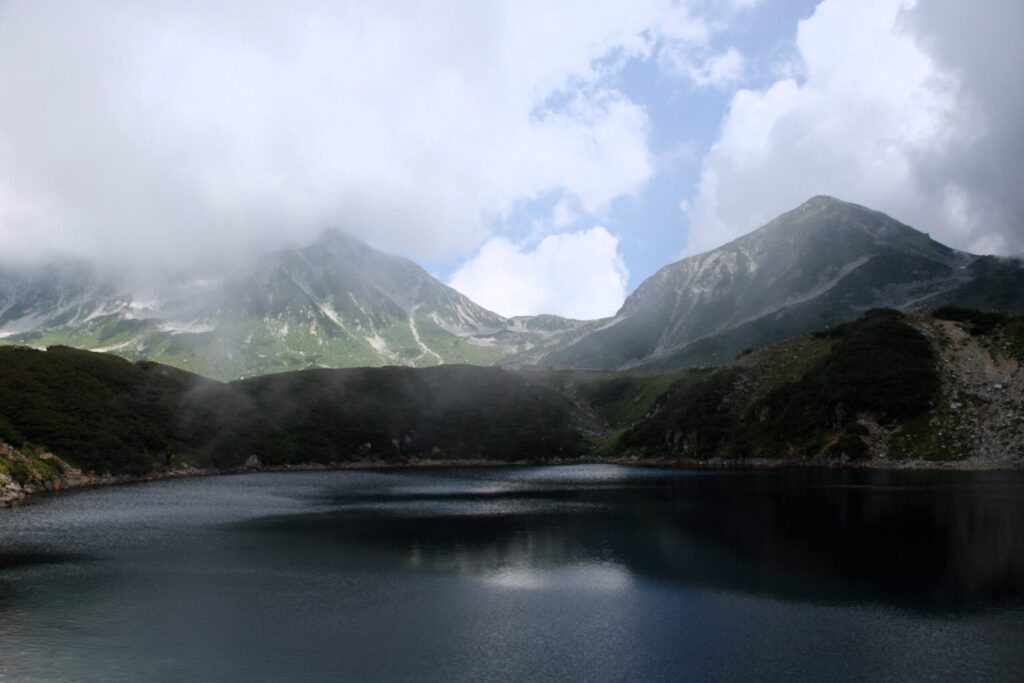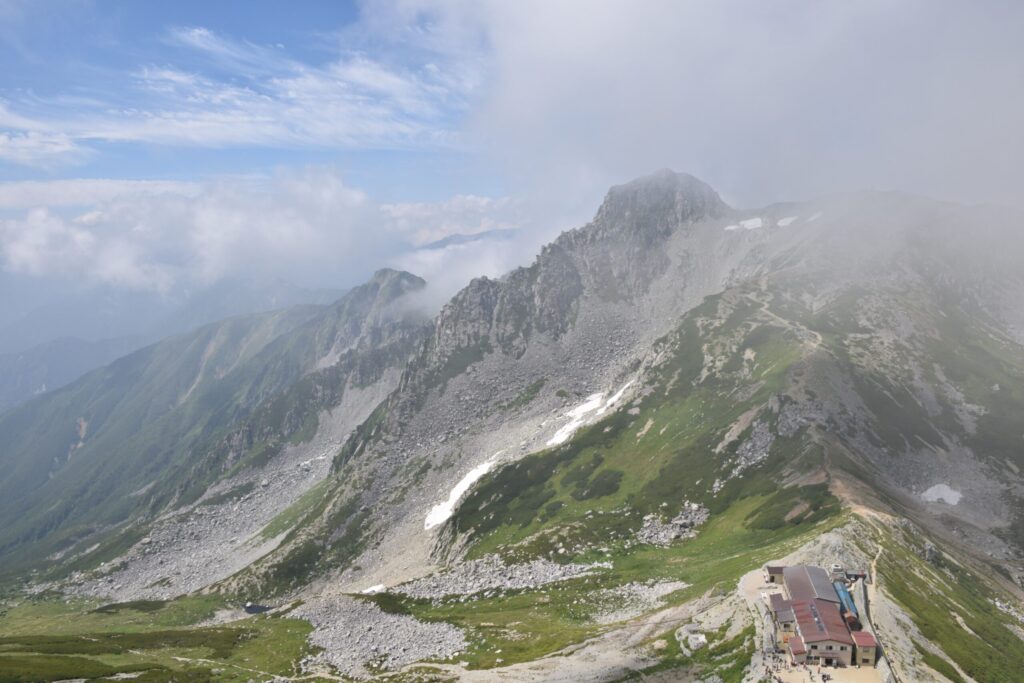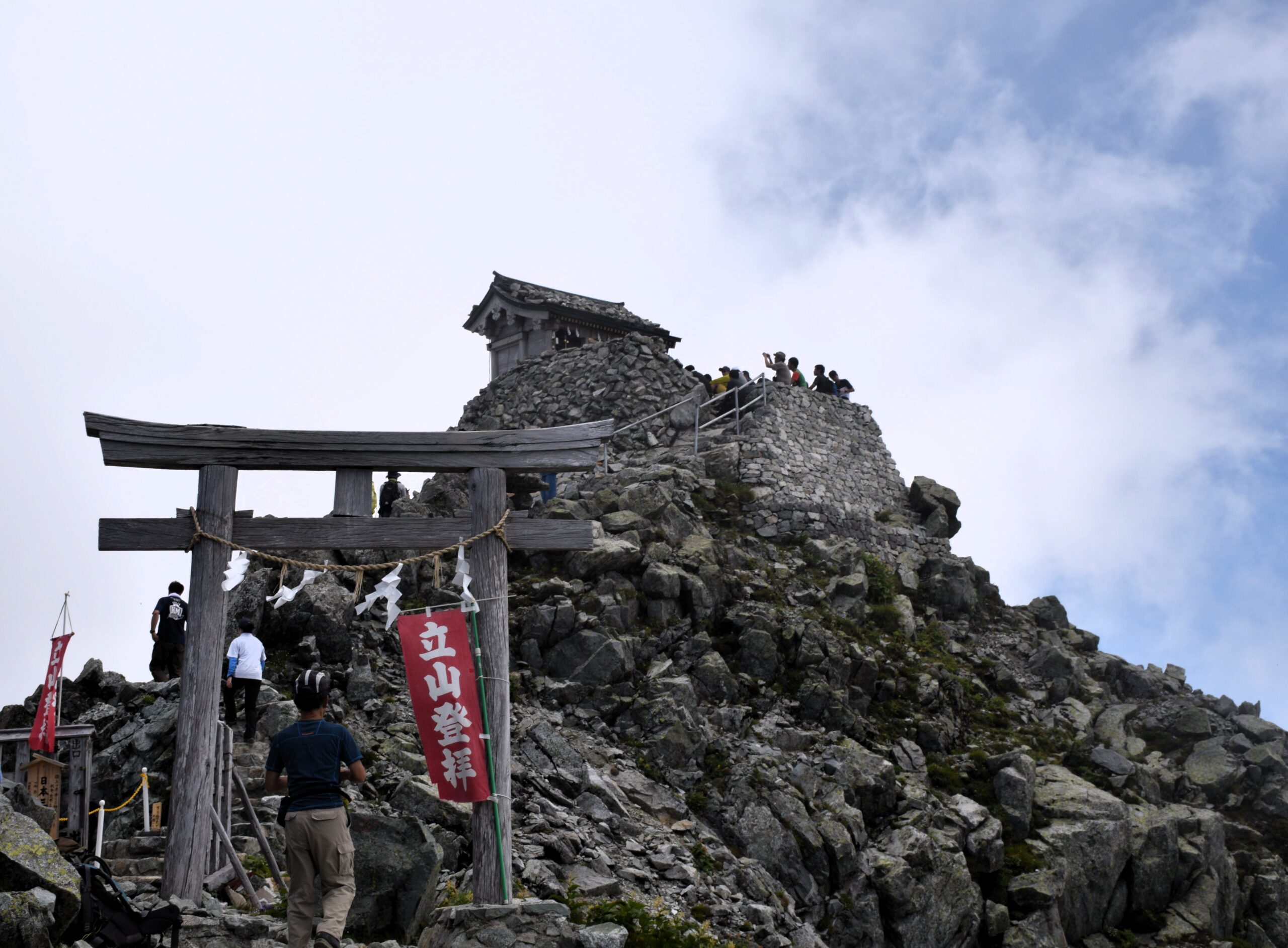Introduction
Oyama Shrine (雄山神社) is located at the very summit of Mt. Tateyama (3,015m) in Toyama Prefecture. It is one of Japan’s most important centers of mountain worship (sangaku shinkō), where pilgrims and hikers have long believed that climbing the sacred peak is a spiritual journey to purify the soul.
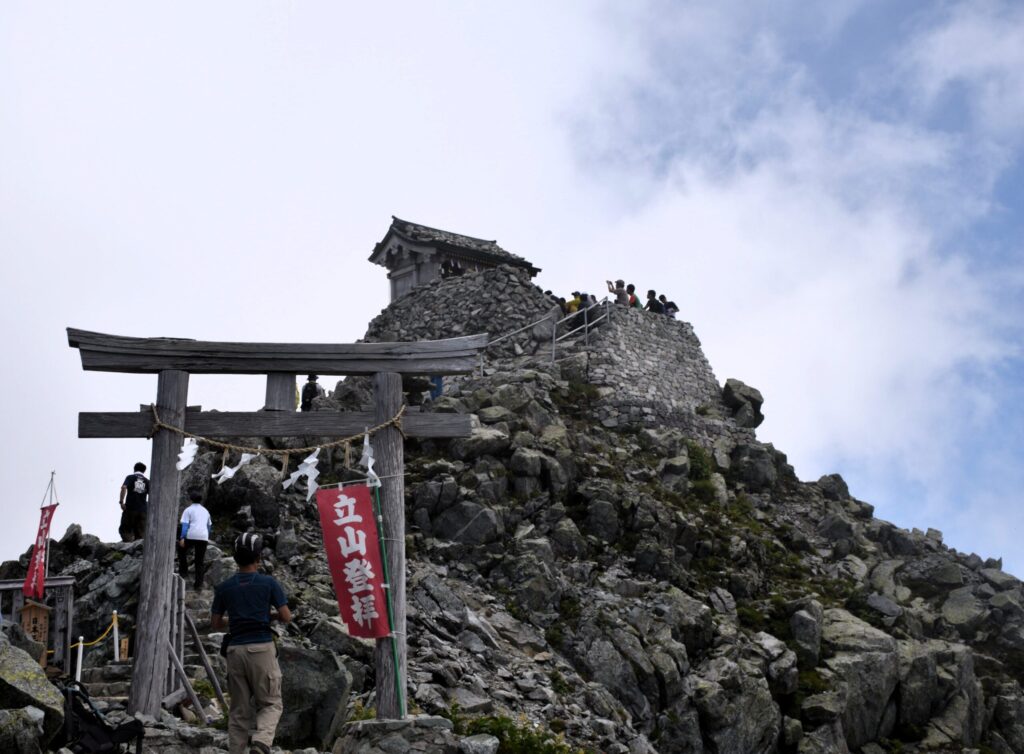
You will find the shrine at the top.
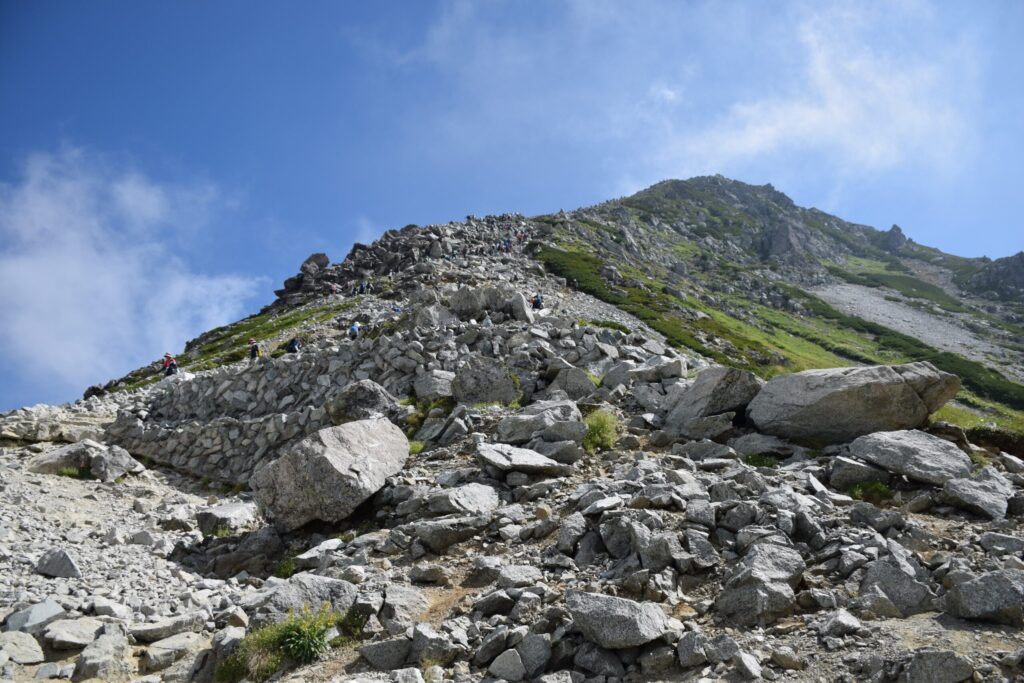
History
Oyama Shrine enshrines two deities:
- Izanagi-no-Kami: One of the primordial gods in Japanese mythology, symbolizing purification and the source of life.
- Ame-no-Tajikarao-no-Kami: A god of strength and victory, known for his role in the myth of the Sun Goddess and the Heavenly Rock Cave.
The blessings believed to be received from these deities include:
- Prayers for victory
- Prosperity in business
- Good relationships and marriage
- Protection from misfortune and good fortune in life
Oyama Shrine is composed of three sanctuaries:
- Mine Honsha (Summit Main Shrine) – Located at the mountain’s peak (3,015m).
- Nakamiya Kigan-den (Middle Sanctuary at Ashikura) – The spiritual center of Tateyama worship and a place of prayer for ascetics.
- Maedate Shadan (Lower Sanctuary at Iwakura) – Serving as the “foothill shrine,” it marks the starting point for pilgrimages.
Together, these three shrines symbolize the journey of Tateyama worship, representing the passage from the everyday world to the spiritual realm.
Historical Relic – Bronze Vajra-Headed Iron Sword
Oyama Shrine preserves a National Important Cultural Property: the Bronze Vajra-Headed Iron Sword (Dōshakujō-gashira Tsuki Tekken).
Believed to date back to the Heian period (8th–12th century), it was dedicated by ascetic monks as a symbol of Tateyama faith. The vajra staff was a ritual tool of monks, and when combined with a sword, it represented both spiritual and physical protection.
What is truly remarkable is that this sacred treasure was offered at the 3,000m summit during the Heian period, long before the development of modern mountaineering equipment. This achievement speaks volumes about the extraordinary faith, endurance, and determination of those who climbed the peak centuries ago.
Even more astonishing, the relic was later discovered at the summit and has survived to this day. Today, the actual artifact can be viewed at the Tateyama Museum in Tateyama Town, Toyama. For visitors, it offers a rare opportunity to witness a cultural treasure that bridges faith, history, and endurance.
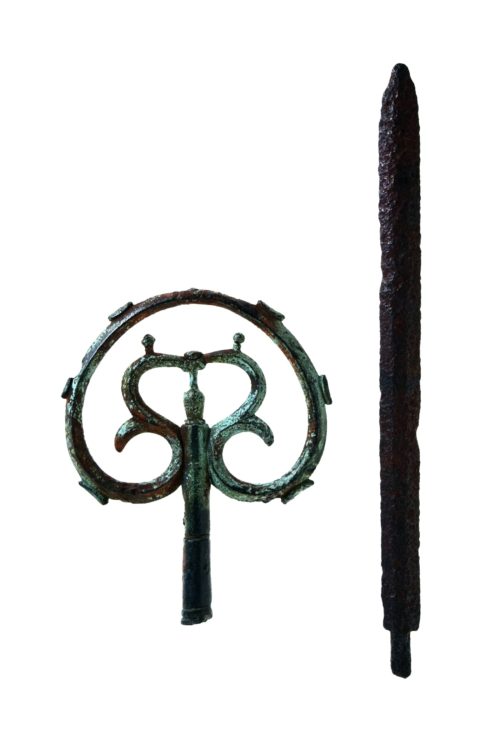
Highlights
- Summit Shrine Building: At 3,015m, this is one of the highest shrines in Japan.
- Panoramic Views: On clear days, you can see the Sea of Japan, and even the Japanese Alps.
- Spiritual Atmosphere: Priests sometimes perform rituals at the peak during summer.
- Tateyama Mandala Culture: The mountain is part of a broader religious tradition showing Buddhist paradise and hell.
Goshuin
Oyama Shrine has three sanctuaries, each with a different goshuin (temple/shrine seal)
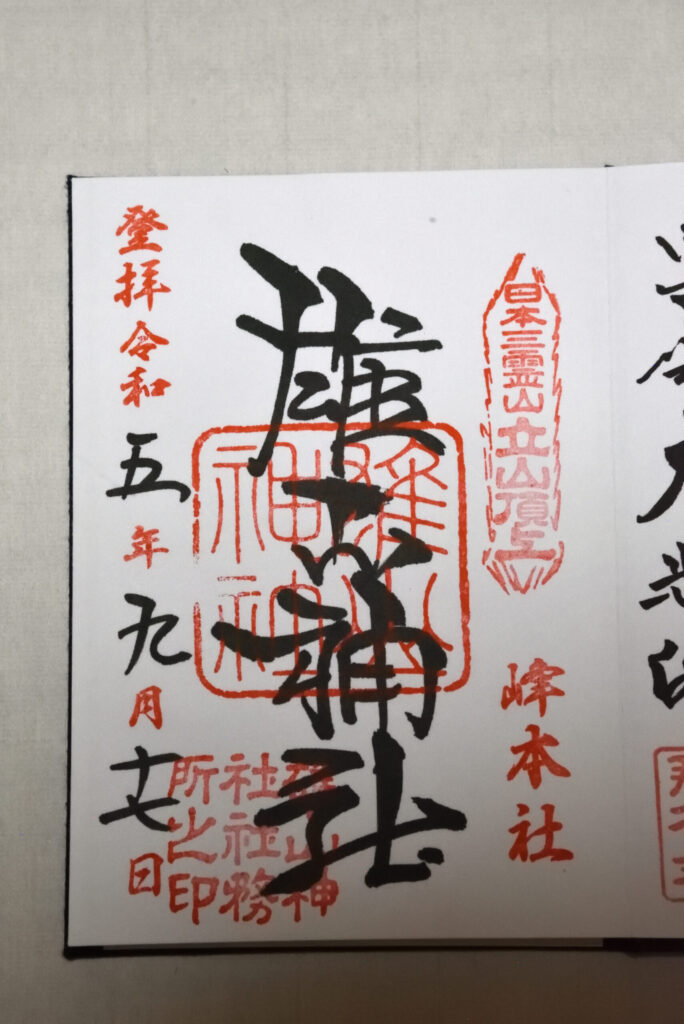
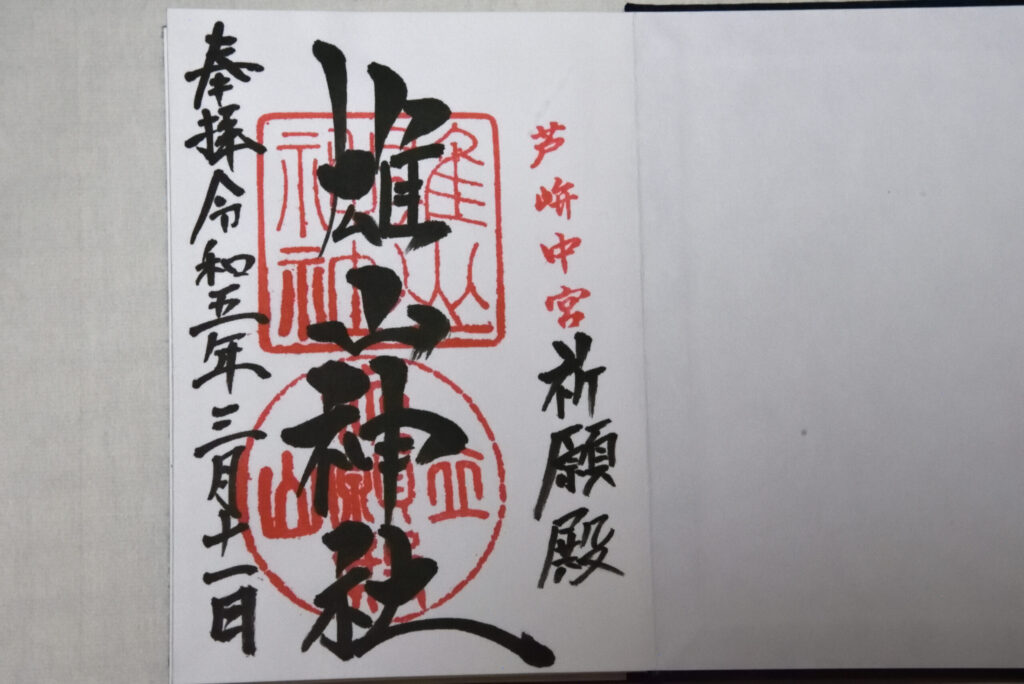
Access
- From Tokyo / Osaka: Take the Hokuriku Shinkansen to Toyama Station (2–3 hrs).
- From Toyama Station: Travel via the Tateyama Kurobe Alpine Route (train, cable car, and bus).
- Final Ascent: From Murodo (室堂), hike about 3 hours to the summit (moderate–difficult trail).
This shrine is only accessible from July to early October, when the mountain is free of snow.
Click here for detailed access information from Toyama Station.
Travel Guide: From Toyama Station to Tateyama and Murodo
Visitor Info
- Opening Season: July–October (closed in winter due to heavy snow).
- Entrance Fee: Free (but transport and Alpine Route tickets are required).
- Etiquette:
- Purify hands at the spring water near the shrine (if available).
- Bow twice, clap twice, bow once.
- Respect the mountain environment—carry out all trash (there are no trash bins).
Nearby Spots
- Murodo Plateau: Famous for alpine flowers, volcanic craters, and hot springs.
- Mikurigaike Pond: A photogenic volcanic lake reflecting Tateyama.
- Tateyama Museum (near the base): Learn about mountain worship and local culture.

